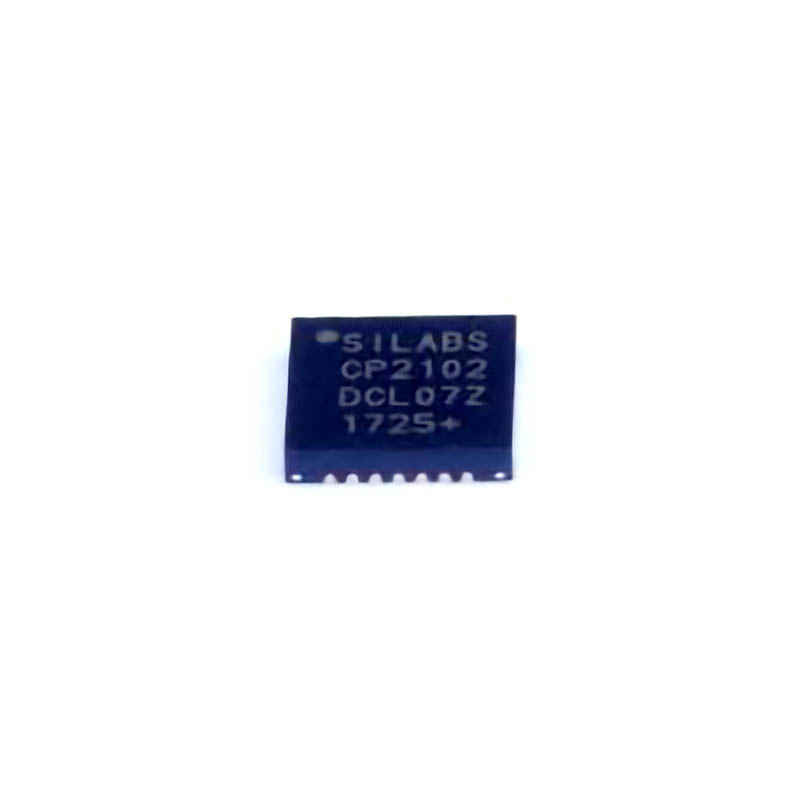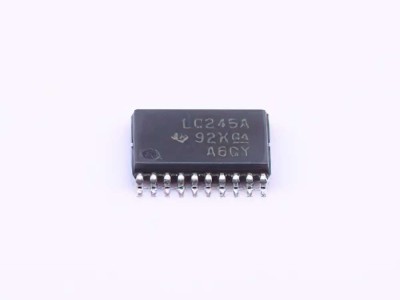
Introduction to CP2102-GM and its Impact on USB-to-UART Communication
In the world of Embedded systems, communication between various components often forms the backbone of an efficient system. Whether you're working with microcontrollers, sensors, or other peripherals, having reliable data transfer is essential for smooth operations. One of the most commonly used communication methods is the UART (Universal Asynchronous Receiver/Transmitter) protocol, which provides a simple and efficient way to transmit data over serial connections.
However, many modern systems rely on USB (Universal Serial Bus) interface s, making it essential to bridge the gap between these two technologies. Enter the CP2102-GM — a game-changing USB-to-UART bridge from Silicon Labs, designed to simplify the process of connecting USB devices to UART-based systems. The CP2102-GM is an integrated, high-performance solution that offers rapid development opportunities for embedded system developers, enabling them to focus more on their application rather than low-level hardware design.
The Rise of USB-to-UART Bridges
With USB becoming the standard communication interface across personal computers and embedded devices, developers frequently need to interface legacy UART devices with newer USB-based systems. The CP2102-GM fills this need by converting USB data to UART signals and vice versa. This enables developers to easily integrate USB connectivity into systems that were traditionally designed with UART in mind.
Before the development of USB-to-UART bridges like the CP2102-GM, creating a functional communication pathway between USB and UART interfaces often required significant time, effort, and complex circuit design. Now, with the CP2102-GM, this process is streamlined. Its compact design and built-in functionality allow for rapid development, saving both time and resources for engineers.
Key Features of CP2102-GM
The CP2102-GM is packed with features that make it a versatile solution for USB-to-UART communication. Some of its standout attributes include:
Integrated USB transceiver : The CP2102-GM integrates the USB transceiver, eliminating the need for external components. This reduces the overall complexity and cost of the design, making it ideal for both low- and high-volume applications.
Fast Data Rates: The CP2102-GM supports data rates up to 1 Mbps, allowing for fast and efficient data communication. This feature ensures that data can be transferred quickly without significant delays, crucial for time-sensitive applications.
Low Power Consumption: The CP2102-GM is designed with power efficiency in mind, making it suitable for battery-powered devices and portable applications where power consumption is a critical factor.
Flexible UART Interface: The device supports a wide range of UART configurations, including different baud rates, data bits, stop bits, and parity settings. This flexibility allows developers to tailor the communication protocol to suit specific system requirements.
Virtual COM Port (VCP) Driver: With the CP2102-GM, developers can use standard VCP drivers, which makes integration with the host system straightforward. The VCP drivers allow the UART interface to appear as a standard COM port, making it compatible with existing software and applications that use serial communication.
Ease of Use: The CP2102-GM comes with an easy-to-use software package and documentation that helps developers get started quickly. This simplifies the development process, allowing teams to reduce time-to-market.
These features make the CP2102-GM an ideal choice for applications that require seamless communication between USB and UART devices, such as IoT systems, industrial automation, and consumer electronics.
Applications of CP2102-GM
The CP2102-GM is well-suited for a wide range of applications. Some of the most common use cases include:
Embedded System Development: Many embedded systems still rely on UART for communication, but need to interface with USB-based systems. The CP2102-GM bridges this gap, enabling the development of USB-enabled embedded systems without having to completely redesign the hardware.
Prototyping and Rapid Development: Engineers and developers working on prototype designs often require quick and reliable solutions for USB-to-UART communication. The CP2102-GM offers a plug-and-play solution, significantly accelerating the development process and allowing teams to test and iterate their designs with ease.
Firmware Updates: Many embedded devices require periodic firmware updates via a USB interface. The CP2102-GM can be used in systems where a USB host (such as a PC) needs to communicate with a UART-based device to perform firmware updates, making it ideal for maintaining and upgrading field devices.
Serial Communication in IoT Devices: The rise of the Internet of Things (IoT) has brought about the need for reliable serial communication in a variety of connected devices. The CP2102-GM facilitates seamless communication between USB-based IoT hubs and UART-enabled sensors, actuators, and microcontrollers.
Industrial Control Systems: In industrial automation, devices often communicate over UART for low-level control and monitoring. The CP2102-GM enables these devices to easily interface with USB-based control systems, providing flexibility and scalability in automation setups.
How to Implement CP2102-GM in Your Projects
Now that we’ve covered the basics and the benefits of the CP2102-GM, let’s explore how you can integrate this versatile USB-to-UART bridge into your own projects. By providing an overview of the implementation process, we will help you get up to speed quickly and make the most out of this powerful tool.
Step 1: Understand Your Requirements
Before diving into the implementation, it’s essential to understand the specific needs of your project. Consider the following:
Data Rate: Does your application require high-speed data transfer? If so, the CP2102-GM can easily support data rates up to 1 Mbps, which should be sufficient for most embedded systems and IoT applications.
Power Consumption: Are you designing a battery-powered device? The low power consumption of the CP2102-GM makes it a great choice for power-sensitive projects.
Peripheral Compatibility: Are you working with UART devices that need specific configurations (e.g., custom baud rates, data bits, stop bits)? The CP2102-GM’s flexible UART interface can be adjusted to meet a wide range of communication requirements.
By carefully considering these aspects, you can ensure that the CP2102-GM is the right fit for your system.
Step 2: Circuit Design and Integration
Integrating the CP2102-GM into your design is straightforward. The module can be easily interfaced with a microcontroller or other UART devices using the standard UART connections: TX, RX, RTS, CTS, and GND. If your application involves multiple UART devices, the CP2102-GM can be used in a multi-drop configuration, enabling multiple devices to communicate through the same USB port.
Since the CP2102-GM integrates the USB transceiver and doesn’t require additional components like external resistors or capacitor s, the circuit design remains simple. The module’s small form factor also makes it easy to incorporate into compact systems.
Step 3: Software Development
The CP2102-GM works with standard Virtual COM Port (VCP) drivers, which are compatible with both Windows and Linux operating systems. Once the hardware is connected, the device will appear as a COM port on the host system, making it easy to communicate with your UART device using standard serial communication software.
Developers can use simple terminal programs or write their own software to interact with the CP2102-GM. Most modern programming environments support serial communication, allowing you to send and receive data over the USB-to-UART interface without the need for complex drivers.
Step 4: Debugging and Testing
Testing the functionality of the CP2102-GM is simple, thanks to its plug-and-play nature. Using a terminal program or a custom application, you can quickly verify that the data is being transmitted correctly between the USB and UART interfaces.
Additionally, tools like oscilloscopes and logic analyzers can be used to monitor the signal integrity and data flow, helping identify any potential issues during development.
Step 5: Going Beyond: Advanced Features
Once you’ve mastered the basics, you can explore more advanced features offered by the CP2102-GM. For instance, it supports flow control options such as hardware and software flow control, which can be essential for applications involving high-speed data transfer or devices that require reliable handshaking.
The CP2102-GM also allows you to configure custom EEPROM settings, which can be useful for tailoring the device’s behavior to suit your specific needs.
Conclusion
The CP2102-GM USB-to-UART bridge module is a powerful tool for developers working in the realm of embedded systems. Its integrated design, high performance, low power consumption, and ease of use make it an ideal choice for applications that require reliable serial communication between USB and UART devices. By simplifying the integration process, the CP2102-GM accelerates development and enables rapid prototyping, making it an indispensable component in the toolkit of embedded system engineers. Whether you're working on IoT devices, industrial controls, or USB-enabled microcontrollers, the CP2102-GM offers an efficient and reliable solution for all your USB-to-UART communication needs.
If you are looking for more information on commonly used Electronic Components Models or about Electronic Components Product Catalog datasheets, compile all purchasing and CAD information into one place.

